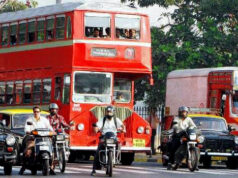In 2014, Prime Minister Narendra Modi emphasized on his humble beginnings through his “Chai Pe Charcha” campaign. Modi, famous as the son of a tea vendor, sat at a roadside tea stall and connected electronically with over 1,000 tea stalls in 300 cities. In the same year, the Street Vendors Act, 2014, legalized street vending and established a regulatory framework to protect vendors’ rights. Moreover, Article 19 (1)(g) of the Constitution of India safeguards the right of street vendors to engage in their choice of occupation.
Sixty-nine years of the Constitution of India, five years under the leadership of the son of a chaiwallah, and an explicit legislative promise of protection, yet, street vendors still face abuse and unlawful evictions by civic authorities and the police.
The Act asks states to create a participatory body to balance the rights of vendors against competing claims by other stakeholders on public spaces. This participatory body, also known as the town vending committee (TVC), is responsible for identifying vendors and developing plans to demarcate vending zones. The town vending committee is the centrepiece of the Act. Unless these committees are up and running effectively, established vendor rights will remain a remote dream.
Our team at the Centre for Civil Society studied the constitution and functioning of one of these participatory bodies in “millennium city” Gurugram.
The Act says there should be at least 12 vendor members of a 30-member committee. In Gurugram, the committee has only four. The vendors who were listed as “committee members” in official documents denied being part of the panel. Besides, a civil society representative went so far as to say that he was only a part of the committee as he was “friends with the city project officer (CPO)”. These details are non-trivial. The committee, its constitution and how it functions have direct implications on the 18,000 identified vendors of the city.
Inadequate and arbitrary representation of vendors can have far-reaching consequences on the protection of their rights. Consider this: The same committee in Gurugram issued an order to shift vendors from Sector 14 based on complaints from resident welfare associations (RWAs) and market associations. Who was a part of this meeting? Were vendors included? We don’t know. Later, when the vendors challenged this decision, a committee of the district town planner and the city project officer (both are members of the local authority) inspected the respective vending sites and recommended that vendors be shifted. Challenged again in court by the vendors, the committee was asked to reconvene and take a “fair decision” after hearing the arguments of all concerned stakeholders. Of the 17 members, including municipal officials, the CPO’s friend and the local resident association representative, only three opposed the proposal. Not surprisingly, all three were vendor association representatives.
Another consequence of vendors’ underrepresentation is the price vendors in Gurugram are paying for their right to vend. In a June 2016 meeting of the town vending committee, the Municipal Corporation of Gurugram refused to grant advertising rights to private enterprises that were otherwise willing to bear these costs. Today, vendors have to cough up nearly ₹1 lakh for vending carts. Vendors who attended the meeting did not challenge the decision as they were willing to invest in anything that would assure them some recognition and security of tenure.
The examples show that the suppression or protection of vendors depends on the quality of regulations proposed by the local authority. Formed by the same local authority, the committee is supposed to serve as a mechanism for negotiation between the state and civil society through its representation of different stakeholders. However, the municipal commissioner is the chairperson of the town vending committee under the Act. So, if the municipal authority, under the commissioner, excludes them from meetings, decisions and streets, where do vendors go? Is there any accountability mechanism in place to check the authority of the municipal commissioner?
At the city level, the top-down hierarchy starts at the state government, which, through its chief minister, appoints the municipal commissioner. Under these circumstances, the commissioner lacks incentives to execute policies that benefit the local electorate. However, Indian cities are governed by two independent heads—the administrative head being the municipal commissioner and the legislative head being the mayor. The latter, being a ceremonial head, has limited or no powers over city planning despite being a representative of citizens. States can change this; the Bhopal Municipal Corporation, for instance, did not shy away from amending its Municipal Corporation Act, and has had a mayor-in-council system with a directly elected mayor. This idea is one of many that can be explored by other cities to plug implementation gaps from the bottom up.
For a city to be able to effectively plan for its citizens, it needs to be made accountable to them. But the question that over 100 million vendors are asking, now that the world’s largest electorate has voted, is the following: Are street vendors citizens of the city they vend in, or are they still encroachers?
This article was originally published in Live Mint.
Read more : https://spontaneousorder.in/street-entrepreneurs-victims-of-executional-paralysis/
Post Disclaimer
The opinions expressed in this essay are those of the authors. They do not purport to reflect the opinions or views of CCS.






